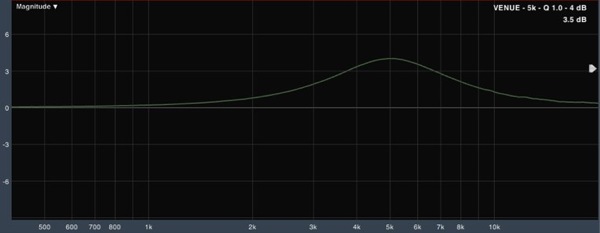
Classic Q
I’m sticking with the EQ theme for another week. I guess there is some discussion out there on how wide an EQ filter should be. I believe I was talking about this recently with Lee Fields, and we were both of the same mind that we like wider filters than we see a lot of guys using. Are they better? Well, you’ll have to explore and figure that out for yourself. In the meantime, I’d like to give you some things to think about before you experiment for yourself.
I had the console up and running the other day so I took 5 minutes to do some more quick measurements of some different EQ’s. I tried to get the frequencies and levels matched as close as possible so you can simply focus on how wide the processing is.

VENUE EQ
First up is a measurement of the standard Avid VENUE console EQ with it’s default Q setting of 1.0. Q, in case you didn’t know, determines the width of the filter. Lower numbers represent wider filters and higher numbers represent narrower filters. The default Q setting on the VENUE is where I typically start, and then I generally go wider from there. I wish I had done a comparison measurement of the highest Q setting at 10, but you’ll just have to take my word that it can get very narrow.
Now let’s compare the VENUE’s default Q setting to some classic EQ emulations courtesy of Waves. These are plugin emulations of some sought after EQ’s that are known as being musical; I hate using that word to describe gear, but that’s what people say. Regardless, it’s a safe bet that you have heard these EQ’s in action on some of your favorite records.
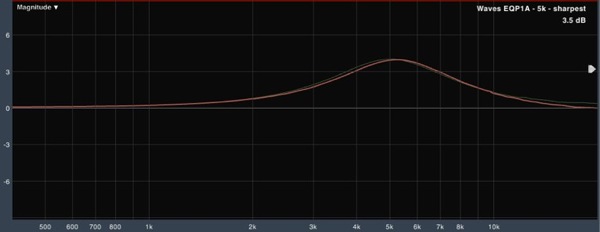
Waves Puigtec EQP1A vs. VENUE EQ
First up is the Waves Puigtec EQP1A which is Waves’ emulation of the classic Pultec EQP1A. In the graphic, hopefully you can see that the EQP1A measurement is sitting on top of the VENUE EQ’s measurement. They match pretty close, huh? Of course, you should keep in mind that the EQP1A measured here has it’s Q set to the narrowest setting. It is actually a pretty wide EQ compared to the VENUE.
The Pultec, by the way, is the reason why all these measurements are boosted. There is only one peaking filter in the EQP1A and it ONLY boosts. So let’s look at some other EQ’s where the controls go both ways.
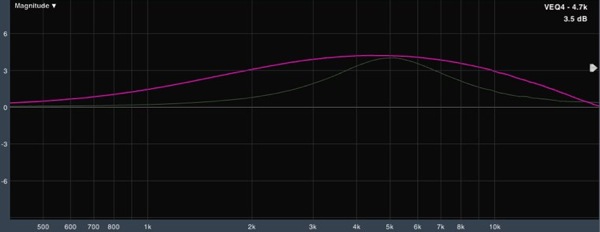
Waves VEQ4 (standard Q) vs. VENUE EQ
Next up is the Waves VEQ4 which is their emulation of the classic Neve 1081 EQ. The VEQ4 has two Q settings, standard and Hi-Q. This is the standard setting. Again, it’s quite a bit wider than the default VENUE setting, right? Also notice how much smoother the slope and peak of the filter is as well. Let’s add the Hi-Q setting to the picture.
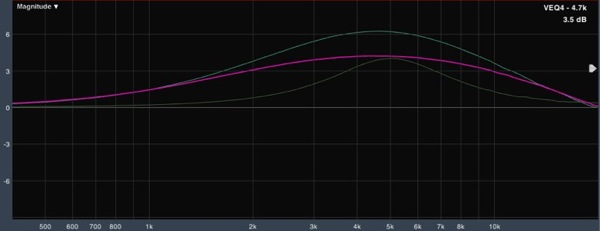
Waves VEQ4 vs. VENUE EQ
This one’s interesting because while we get a narrower filter, we also get an increase in gain of about 2 dB. The Hi-Q setting also features a little more of a peak, but it’s still pretty smooth. Notice, though, that the VEQ4’s narrowest filter setting is still wider than our VENUE EQ’s default Q setting.
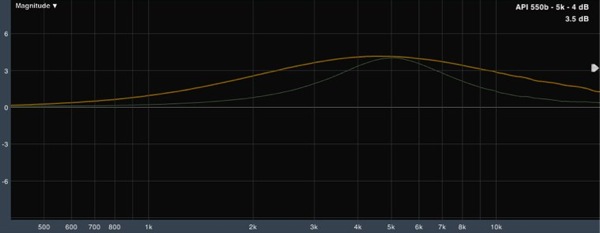
API 550b vs. VENUE EQ
Finally, we have Waves’ API 550b. The 550b has a fixed Q setting which looks slightly narrower to me than the VEQ, but it also features a smoother slope and wider filter than VENUE.
So I think this is something worth thinking about. Modern EQ’s tend to be more surgical in nature even at their wider settings when compared to some classic and legendary EQ’s. There’s definitely a time and place for surgery, so this doesn’t mean wider is always better. However, I think it’s worth considering that the people in our venues including us are probably used to listening to recorded music that was mixed using EQ’s featuring wider filters than we realized.
Personally, my goal in mixing is to do as little of anything as possible; EQ, compression, whatever. I want the least I can get away with.
Sometimes I get surgical with EQ and use a narrower filter, but when I run across something that needs surgery it’s more often than not something that can and should be fixed at the source. This is important because if the source is good and captured properly to begin with, you shouldn’t need to get surgical with EQ in most cases.
In terms of my general use of EQ, I’ve mentioned I like wider filters. It wasn’t an intentional thing for me to do this. It was just where I landed over time from using my ears. In fact, I remember as I was growing in my career I used to get uncomfortable because I would see I was using wider EQ than I thought I should use. Of course, this was silly because my ears weren’t lying, and it sounded good. It was only much later that I learned how wide the legendary EQ’s I’d hear and read about actually were.
I know this post is a pretty blatant promotion of using wider EQ settings; it’s my blog so I can do that. But really what I’d like you to take away is you’re ultimately going to have to use your own ears to decide what the best frequency, gain, and filter width is for your EQ task at hand. My hope is that you won’t get hung up on whether an EQ is wide or narrow, and you’ll just use your ears.
The EQ display on digital consoles can be a blessing and a curse. Don’t let it scare you away from doing something that sounds right, and don’t let it trick you into doing something that’s wrong just because it looks right. Stop looking at it if that’s what it takes. Actually, just stop looking at it until you’re done. Use your ears first.
I recently got to dig through a tour show file on a rental console, and what I found in it startled me. If I was listening with my eyes, the show was bad news. However, two people who’s ears I trust more than anyone else’s were at that show and both independently said it was one of the best sounding shows they’d ever heard. I’d venture it was mixed by listening and not worrying about how things looked.
There’s really just one main rule I have in mixing, and that’s that it better sound better when I’m done with it than when I started. Mix with your ears. Mix with your gut. Ignore what the settings look like and make it sound great.

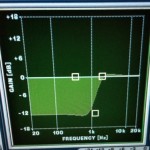 Previous Post
Previous Post



It’s great to see those measurements.. I have always loved the Waves VEQ and now that I can see what it’s doing I will definitely start using wider Q’s on all my EQ’s.
Dave, this is one of the top posts all-time. So simple for everyone to implement and get improved results. Nearly everyone on a digital console struggles with mixing with their eyes; reading posts like this is how we can get out of that trap.
I’ve got a Digico SD9 out on tour right now and the defult Q is 0.71… I guess the british agree! Great post.